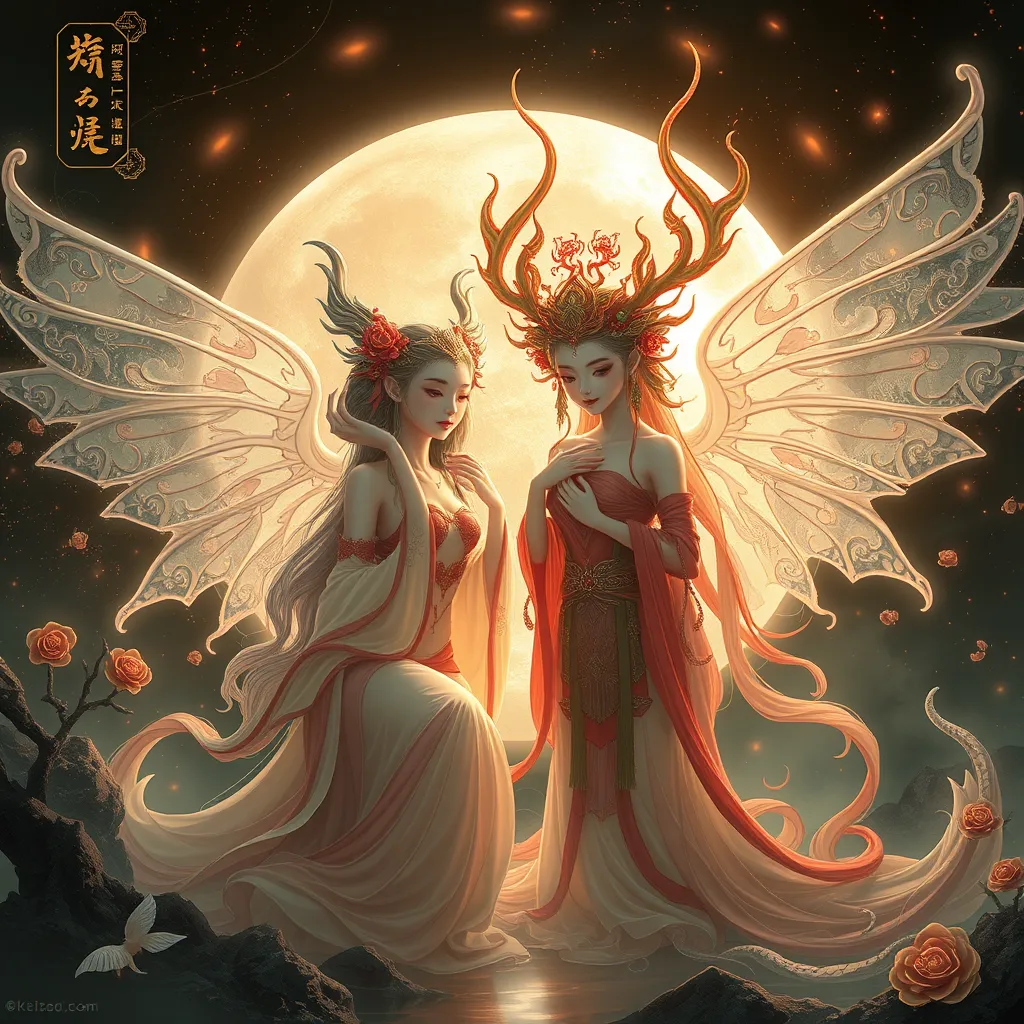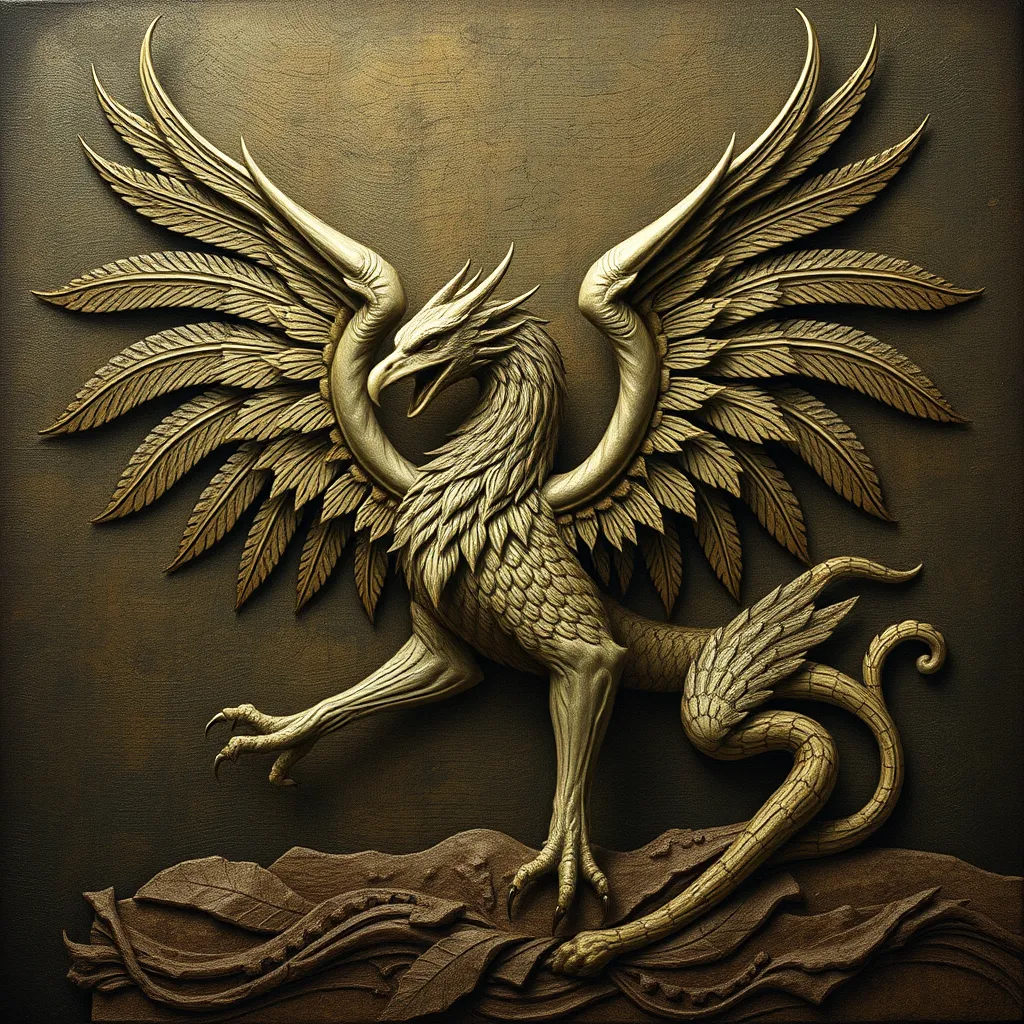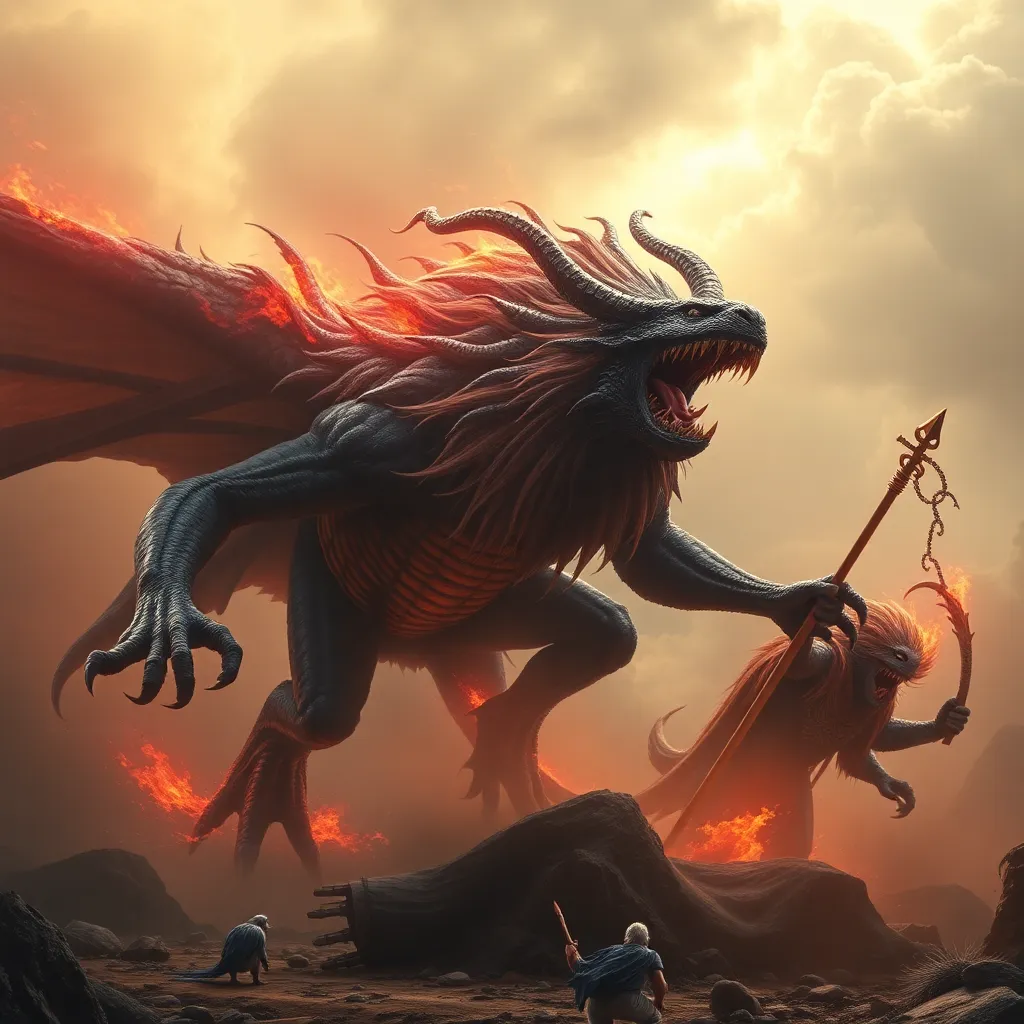The Nymphs of Chinese Mythology: Exploring the Nüwa and the Xi Wangmu
I. Introduction to Chinese Mythology
Chinese mythology is rich and diverse, woven into the fabric of the culture and history of China. It encompasses a variety of deities, legendary heroes, and mythical creatures, each playing a significant role in the understanding of the world and human existence. Among these figures, Nüwa and Xi Wangmu stand out as powerful female deities, embodying essential aspects of creation, femininity, and the natural world.
II. Nüwa: The Creator Goddess
A. Origins and Birth of Nüwa
Nüwa is often depicted as a primordial goddess, with her origins steeped in ancient Chinese creation myths. According to various legends, she was born from the cosmic chaos and is sometimes described as having a serpent-like lower body, symbolizing her connection to nature and the earth. Her birth story varies across texts, but she is universally recognized as a deity of immense power and significance.
B. Nüwa’s Role in Creation
One of the most celebrated myths surrounding Nüwa is her role in creating humanity. It is said that, using clay from the banks of the Yellow River, she molded the first people. However, the process took a toll on her, and to create more humans, she used a simpler method—creating them from mud. Furthermore, Nüwa is also credited with mending the sky after a great cataclysm that caused chaos in the world, showcasing her role as a nurturing protector.
C. Symbolism and Attributes
Nüwa embodies several essential attributes:
- Nature: She is deeply connected to the earth and its elements.
- Femininity: As a female deity, she represents the nurturing and creative aspects of femininity.
- Balance: Nüwa symbolizes harmony in the universe, bridging the gap between heaven and earth.
III. Xi Wangmu: The Queen Mother of the West
A. Historical Background of Xi Wangmu
Xi Wangmu, also known as the Queen Mother of the West, has a rich history in Chinese mythology, evolving through various dynasties and texts. Historical records, such as the “Shan Hai Jing” (Classic of Mountains and Seas), highlight her as a powerful figure associated with immortality and divine wisdom. Over time, she became a central figure in Daoist cosmology.
B. Xi Wangmu’s Domain and Powers
Xi Wangmu is often associated with the Kunlun Mountains, a mythical realm representing the axis of the world. Within her domain lies a peach garden, where the peaches of immortality grow, symbolizing longevity and wisdom. It is said that those who consume these peaches would gain eternal life, establishing her as a significant figure in the quest for immortality.
C. Symbolism and Attributes
Xi Wangmu is characterized by several symbolic attributes:
- Immortality: She is synonymous with eternal life and the pursuit of longevity.
- Wisdom: As a motherly figure, she embodies knowledge and understanding of the universe.
- Femininity: Like Nüwa, Xi Wangmu represents the nurturing aspect of the divine feminine.
IV. The Interplay Between Nüwa and Xi Wangmu
A. Common Themes and Characteristics
Nüwa and Xi Wangmu share several common themes, primarily revolving around femininity, creation, and the nurturing aspect of nature. Both figures symbolize the power of women in mythology, demonstrating that femininity is not merely nurturing but also creative and protective.
B. Differences in Their Mythological Roles
Despite their shared characteristics, Nüwa and Xi Wangmu have distinct roles in mythology. Nüwa is primarily a creator and protector, responsible for the formation of humanity and the restoration of cosmic order. In contrast, Xi Wangmu is more associated with immortality and the afterlife, serving as a guardian of wisdom and longevity. Their narratives reflect different aspects of life and existence, contributing to the richness of Chinese mythology.
V. Cultural Representations and Influence
A. Nüwa and Xi Wangmu in Art and Literature
Both Nüwa and Xi Wangmu have been depicted in various forms of art and literature throughout Chinese history. From ancient paintings to modern interpretations, their images reflect their divine attributes and cultural significance. Traditional Chinese opera often features their stories, emphasizing their roles in creation and the cosmos.
B. Impact on Modern Culture
In contemporary society, the influence of Nüwa and Xi Wangmu can be seen in various media, including films, television shows, and literature. Their stories resonate with themes of empowerment and resilience, inspiring modern interpretations that celebrate feminine strength. Additionally, their depictions in festivals and cultural celebrations keep their legacies alive.
VI. The Role of Nymphs in Chinese Cosmology
A. Nymphs as Symbols of Nature and Life
Nymphs in Chinese mythology represent the spirits of nature, embodying the beauty and essence of the natural world. They are often associated with rivers, mountains, and forests, acting as guardians of the environment. Nüwa and Xi Wangmu can be seen as nymph-like figures, reflecting the nurturing aspects of nature.
B. The Intersection of Gender and Divinity
The feminine divine figures in Chinese cosmology often highlight the intersection of gender and spirituality. Nüwa and Xi Wangmu challenge traditional gender roles, showcasing the power of women as creators and sustainers of life. Their narratives emphasize the importance of balance between masculine and feminine energies in the cosmos.
VII. Contemporary Interpretations and Celebrations
A. Revival of Interest in Nüwa and Xi Wangmu
In recent years, there has been a revival of interest in Nüwa and Xi Wangmu, with modern interpretations in popular culture emphasizing their significance. Various art forms, including graphic novels and animated series, have reimagined these deities, presenting them in new light and making their stories accessible to younger generations.
B. Festivals and Rituals Celebrating Their Legacy
Various festivals and rituals celebrate the legacy of Nüwa and Xi Wangmu. For instance, during the Zhongqiu Festival (Mid-Autumn Festival), people honor these deities through offerings and prayers for prosperity and health. Community gatherings often feature storytelling sessions, where tales of Nüwa and Xi Wangmu are shared, fostering cultural connection and appreciation.
VIII. Conclusion
Nüwa and Xi Wangmu are two of the most significant figures in Chinese mythology, embodying essential themes of creation, femininity, and the natural world. Their stories not only reflect the cultural identity of China but also resonate with universal themes of resilience and nurturing. As modern interpretations continue to emerge, their impact on contemporary culture remains profound, ensuring that their legacies endure for generations to come.



